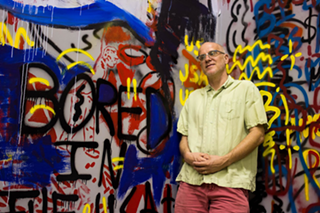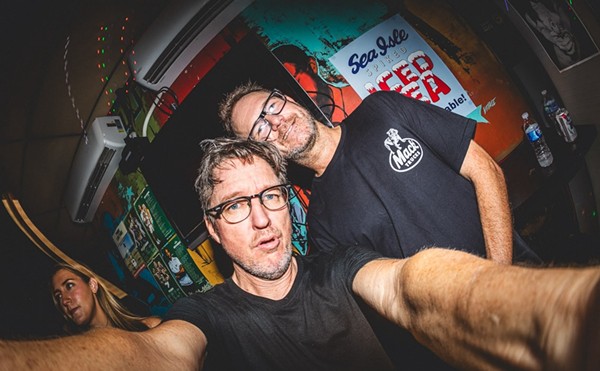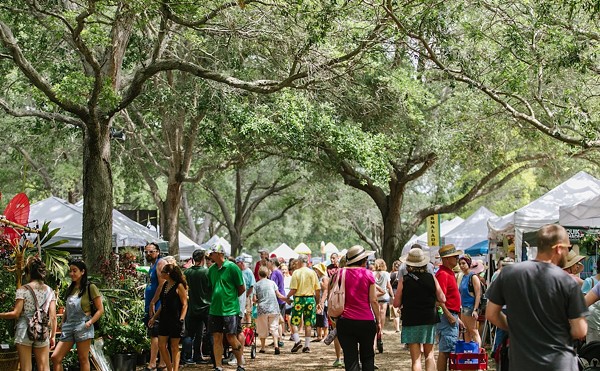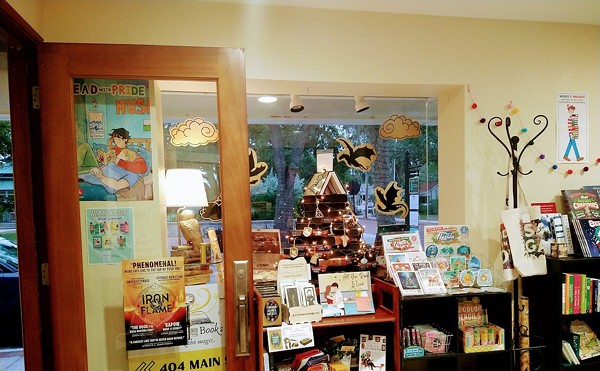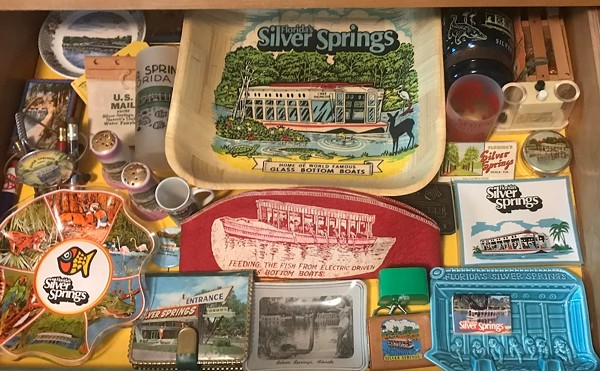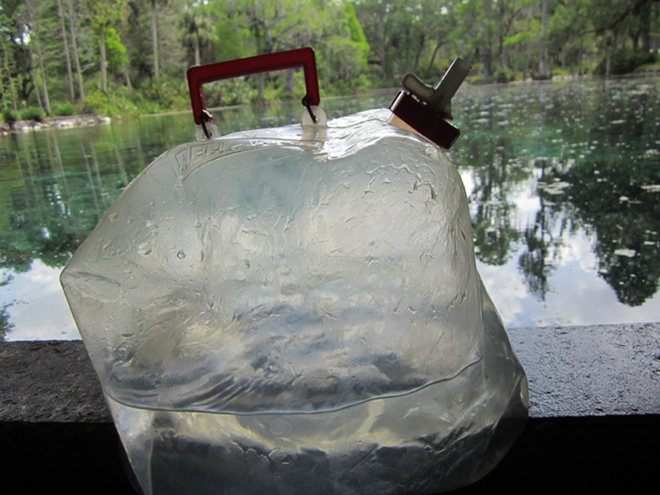
Who owns a river? Or a riverbed?
The Florida Constitution long ago held navigable waterways "in trust for all the people." If a river was navigable in 1845, the state retains title to the mean high-water line. Common lore says differently, that one can freely paddle a river or stream but not step foot on the ground.
Florida riparian law, as a legal expert put it to me, "is a mess."
Fixated by nature with borders and boundaries, I wanted to explore for myself the upper Hillsborough, in Pasco County.
The river here has no launch.
Most of the land falls in private ownership, under the Thomas family, including the second-magnitude Crystal Springs. The Thomas clan owns 20,000+ acres of Florida; scion Robert Thomas sits on pretty much every board or club that matters in Tampa, from Lowry Park Zoo to Ye Mystic Crewe of Gasparilla.
Locals swam freely in Crystal Springs for decades, until 1996, when Thomas controversially cut public access. Today it is a nature preserve, where school groups receive lessons in stewardship.
The family also profits from a deal with Nestlé, which taps Crystal Springs to make Zephyrhills bottled water. A Swiftmud (Southwest Florida Water Management District) license all but gives the water away.
One cannot reach Crystal Springs by land.
Craving access, I dug out a 5-gallon bladder from my camping box for some makeshift, on-site bottling.
I met my anarchist friend Kelly at Crystal Springs Road, off Highway 301. Kelly brought his friend André, a middle-aged punker with graying dreads.
We tossed two plastic kayaks and André's aluminum canoe into the narrow river.
Fifteen minutes downstream, a downed cypress forced us out. A juvenile moccasin guarded the pass. I pushed the viper away with my paddle and scuttled across.
We stood on solid ground. And on murky legal middle ground.
According to a retired historian with the state DEP, this stretch of the Hillsborough was navigable in 1845. On this dry Sunday in April, before the summer rains, we walked.
André and I treaded down the creek bed, on shaky footing between the pocked limestone and muck. Kelly, in flip-flops, lagged behind.
Nothing but cypress, swamp and lizard's-tail. A hawk dove through the green canopy.
I checked my phone for orientation. The screen's blue dot set me in a green nowhere.
I spied a red-and-white marker, the preserve border. "No trespassing," the sign warned.
A boardwalk took me straight to the springhead.
"Forgive us our trespasses," I muttered, sinking my bladder into the crystal-blue sink. Regretting the compromise, I dumped the illegally harvested water immediately.
I backtracked down the dry riverbed and found a dam at the spring run's mouth. I held my bladder to the sluice, catching five of the 30 million gallons that run daily into the river.
Kelly caught up, holding his flip-flops. He grew up near this spring and, feeling no guilt, stripped down to his green boxers for a dip.
We trudged back upstream, past the moccasin deadfall, to the bridge on Crystal Springs Road.
As we loaded our boats, a land manager for the preserve pulled onto the easement. He warned us about deadfalls and poachers. He gave us a SparkNotes lecture on riparian law.
Parking is illegal on this road, the land manager advised. (I saw no signs.) He mentioned security cameras on the preserve. (I doubled my regrets about using the boardwalk.)
A Pasco County sheriff pulled up. Then a second squad car.
Happy to part company, Kelly, André and I finished loading our boats and squeezed into my pickup. I cut a three-point turn across a double yellow line and drove away.
Were the sheriffs going to arrest me over seatbelts?
What was the crime here?
In 2005, Nestlé chairman Peter Brabeck drew internet ire for his claim that a human right to water was "extreme." Brabeck later backed away, pontificating in a corporate video how we "must transform the way we think about water."
Agreed.
Nestlé, according to Swiftmud license, can draw some one million gallons from the springs daily. Nestlé taps the spring. The spring taps the Floridan Aquifer.
But who owns this river through the underground limestone and sand?
The Floridan Aquifer, as experts explain it, works like a sponge. When we draw from one point, the supply diminishes elsewhere. With too many slurps from corporate straws, Floridians lose their springs.
I took my five gallons home. I boiled and bottled the pure products of Florida. If prosecuted for trespassing on the boardwalk, I will have to plead guilty.
Forgive us our trespasses.
Far greater sins are committed against Florida's water, against the public trust. Our aquifer should not profit any one holder. Certainly not Nestlé.
What else to say to a judge, if found guilty on the misdemeanor of trespassing?
Forgive those who trespass against us?


